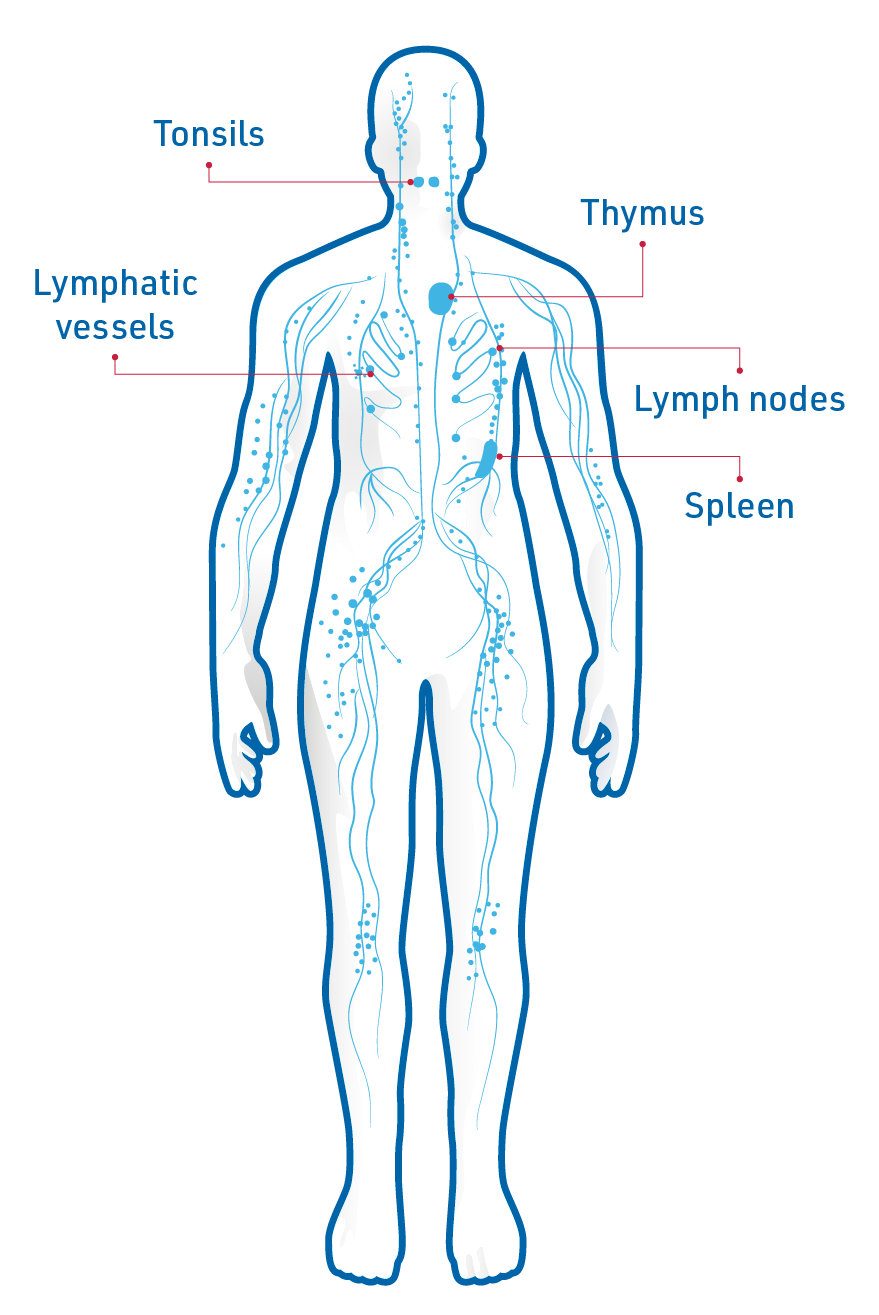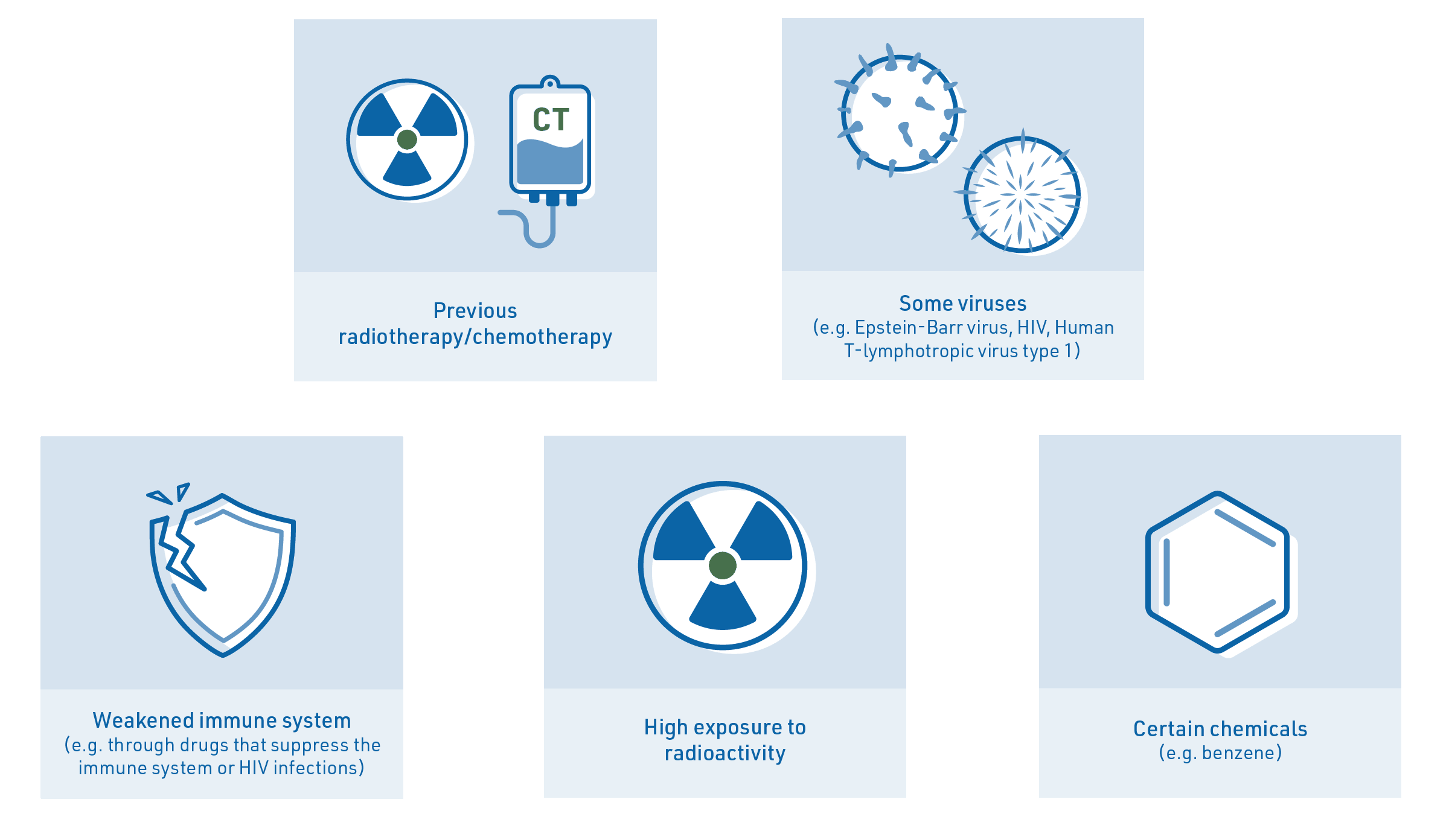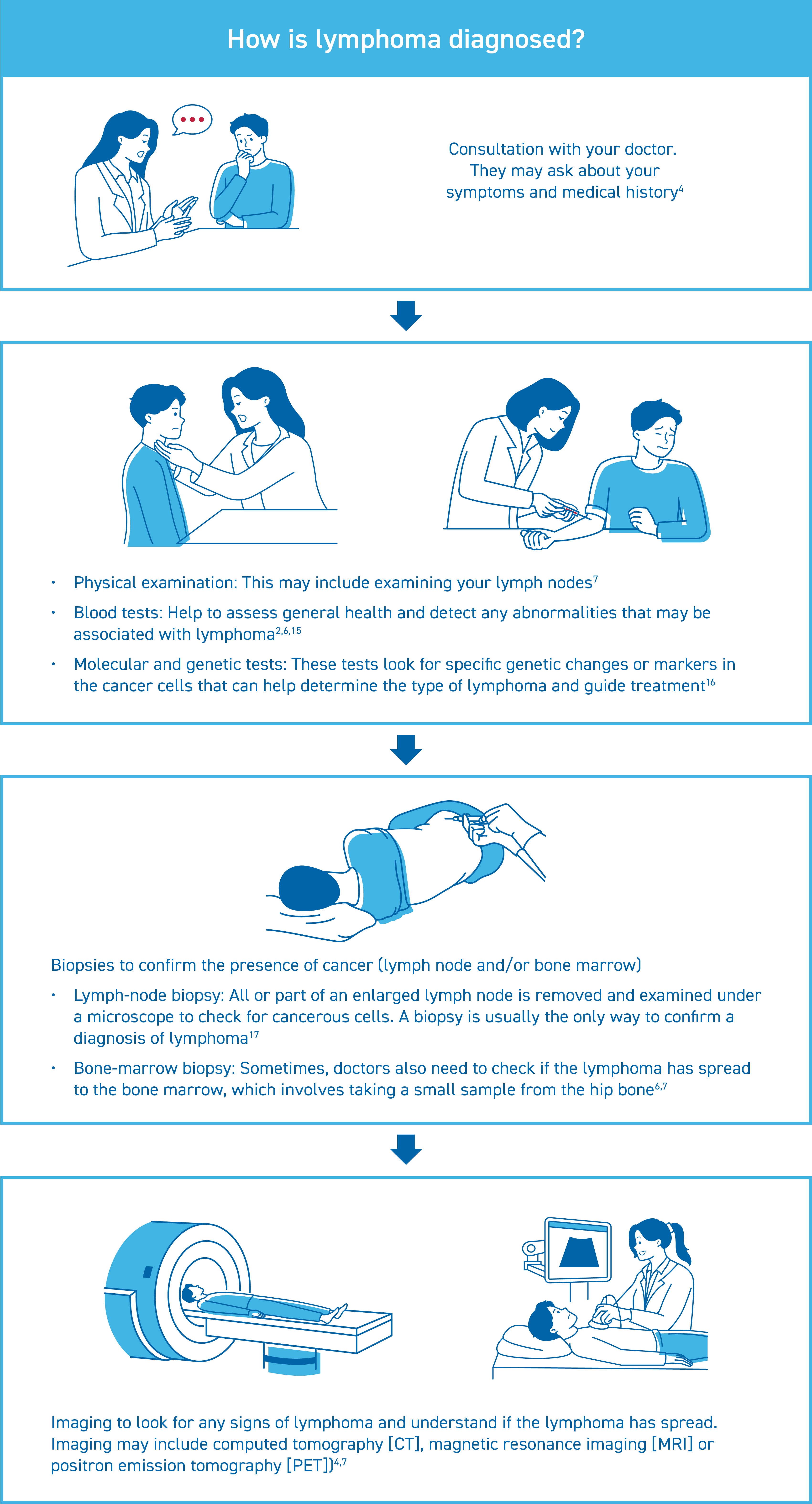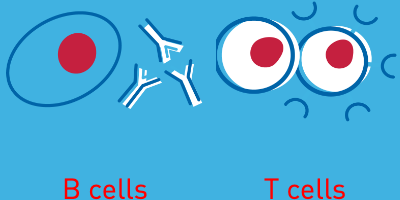
Lymphoma is the term used to describe cancer in the lymphatic system (the network of tissues, vessels and organs that help your body fight infection). Lymphoma may also be called blood cancer because the condition starts in white blood cells (lymphocytes) in your lymphatic system, which grow out of control and don’t work properly anymore.1,2
There are two main types of lymphoma: Hodgkin lymphoma and non-Hodgkin lymphoma.1,2
Haemato-oncology combines ‘haematology’ (the study of blood) and ‘oncology’ (the study of cancer). This branch of medicine focuses on malignant diseases of the blood, primarily lymphoma and leukaemia. Haemato-oncologists are specialists who diagnose and treat these cancers.3 They use treatments like chemotherapy, targeted therapy, and sometimes radiation to manage and fight the disease. They often work with a team of specialists, including surgeons and radiation oncologists, to create the best treatment plan for each patient.3–6
There are two main types of lymphoma: Hodgkin lymphoma and non-Hodgkin lymphoma.1,2
Hodgkin lymphoma is characterised by the detection of large abnormal cells called Reed-Sternberg cells in the lymph nodes. This type of lymphoma is less common, accounting for about 10% of all lymphoma cases.7
Non-Hodgkin lymphoma is more common than Hodgkin lymphoma and is further divided into aggressive (fast growing) or indolent (slow growing) lymphoma.7,8 Aggressive non-Hodgkin lymphoma includes diffuse large B-cell lymphoma (DLBCL), while indolent non-Hodgkin lymphoma includes follicular lymphoma (FL). In some cases, indolent lymphoma may also develop into aggressive lymphoma.9

The human lymphatic system1,2,10
The lymphatic system is a crucial part of the body’s immune system, composed of various organs, vessels, and tissues that are spread throughout the body. One of its primary functions is to produce and release white blood cells called lymphocytes, which help defend the body against infections and other foreign substances. Unlike a single organ (such as your heart), the lymphatic system is made up of several components that work together to protect your body from pathogens and maintain fluid balance.1,2,10
The lymphatic system consists of:1,2,10
Lymphoma usually arise from genetic changes that occur spontaneously during cell division. In most cases, it is not possible to determine why exactly this occurs, however, it is thought that some genetic or environmental factors may increase the risk.1,2
Risk factors for lymphoma1, 2, 11-13

In Singapore, lymphoma is the 4th most-common cancer in men and 5th most-common cancer in women. Over a 5 year period from 2017 to 2021, more than 5,000 cases were reported in Singapore.7 For comparison:
Hodgkin’s lymphoma is most prevalent amongst people aged between 15 and 40 years of age and 55 years and above.7
In non-Hodgkin lymphoma, the risk increases with age, with most patients diagnosed in their 60s and older.7
Currently, there is no routine screening for lymphoma. Diagnosis usually occurs when investigating some of the common symptoms of lymphoma such as fever, drenching night sweats, unexplained weight loss, swollen lymph nodes, patchy red skin and itching, shortness of breath, persistent fatigue or lack of energy/tiredness.7
If your doctor suspects lymphoma, they will perform a physical examination and organise a range of tests to confirm the diagnosis.7,14


B cells and T cells are types of white blood cells called lymphocytes. They work together to help your immune system fight against disease and infections. B cells and T cells develop from cells in your bone marrow and mature in different locations: B cells mature in the bone marrow, while T cells mature in the thymus gland.18–20
T cells are specialised in killing antigens that invade the body, while B cells play a key role in producing antibodies.18-22
Abbreviations:
CAR: Chimeric Antigen Receptor
HIV: Human Immunodeficiency Virus
References: